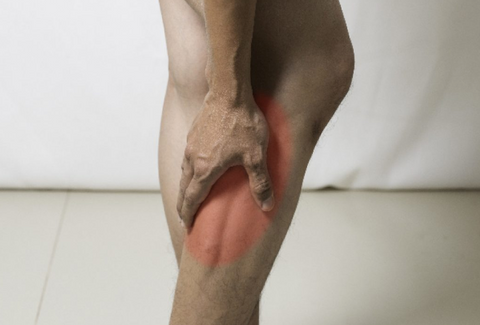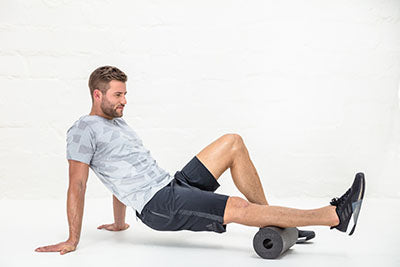
Charley Horses: AKA Nocturnal Leg Cramps
Written By: Jake Polly

It’s 2 AM and I’ve just been jolted out of a deep, restful sleep by what feels like a knife sinking into my calf. After lying there for a few minutes in agonizing pain, rubbing and massaging my aching muscle, the sensation finally subsides. I’ve been visited by and nursed myself through yet another charley horse.
These nocturnal leg cramps don’t just affect me. In fact, over 60% of Americans reports having nighttime leg cramps or muscle spasms. It doesn’t always happen at night, either. You can be struck with these sometimes painful, but always annoying, leg cramps after exercise or while simply sitting at your desk. So what causes these dreadful involuntary spasms?
The pain in your calf, commonly referred to as a charley horse, is actually triggered by the spasm and balling up of your muscles. It can last from a few minutes to several hours and can leave lingering soreness and discomfort for two to three days! Unfortunately, while most of us are very familiar with the symptoms of a charley horse, doctors know little about what the exact root cause of them may be. Thankfully, we do know that there is much that can be done to prevent them.
Dehydration is a major causer of charley horses, as is electrolyte imbalance caused by exercise. Chalk this up to another reason to drink your water during the day and rehydrate your body after exercising! But there are other causes for charley horses that shouldn’t be ignored too, and sometimes guzzling H2O just won’t do it.

If you experience charley horses while being seated at your desk or on the couch, it may be your body’s way of warning you that you’ve been sitting for too long. Prolonged sitting can cause the circulation throughout your legs to go a little haywire , leading to the aforementioned balling up and spasming of your calf muscle. To alleviate charley horses from sitting, get up as often as you can and take a short walk around your living room or office to stretch your legs and get your blood circulating smoothly again.
Finally, the most effective way to alleviate and prevent nighttime charley horses has to do with daytime stretching. Taking the time to stretch your leg and foot muscles each day, including before and after exercise, can drastically reduce your chances of being visited by a nocturnal leg cramp. You can even try stretching after showering, when your muscles are most relaxed, or right before bed. There are several ways to achieve a great stretch, but the most fool proof and effective involves a foam roller.

Foam rollers help you to achieve the perfect amount of pressure and exertion when stretching your calves and feet. While foam rolling helps your muscles to loosen and relieve tightness, it’s also extremely effective in increasing your blood circulation in a nice, even manner. Remember that blood circulation is one of the major causes of charley horses. I like the BLACKROLL PRO foam roller for massaging my tight calves, because of its increased hardness and density. It ensures that the calf muscles keep their elasticity, even while your body is resting in a prone position.
To get the best use out of the BLACKROLL PRO foam roller, try the following simple stretch after your daily exercise, and again before bed. Start by sitting on the floor with your legs extended in front of you. Place the roller under your calf. You can allow your other foot to rest on the floor, or for added pressure, try crossing the right ankle over your left foot. This can be tricky if you don’t have great balance or aren’t familiar with foam rolling, so try to work your way up to it. Then use your hands to lift your hips off the floor, just enough for you to roll from the ankle to below the knee. Rest whenever you feel your arms begin to tire. Then switch to foam rolling your opposite calf. You should feel pressure in your calf muscle, but stop rolling if you feel any sudden pain (and remember to never begin any exercise or stretching program without consulting your physician first!) Once you’ve rolled out your calf muscles, try sitting with your knee bent at a 90 degree angle and using the BLACKROLL PRO foam roller under your feet. Stopping the muscles in the soles of your feet from tightening may also help in alleviating and preventing charley horses.

Hopefully, with the right hydration, exercise and stretching, these simple tricks will be enough to prevent those occasional charley horses. If they continue to be persistent, or are frequent or severe, you should always talk with your doctor. While most charley horses are common enough, they can be indicative of a more serious medical problem.
